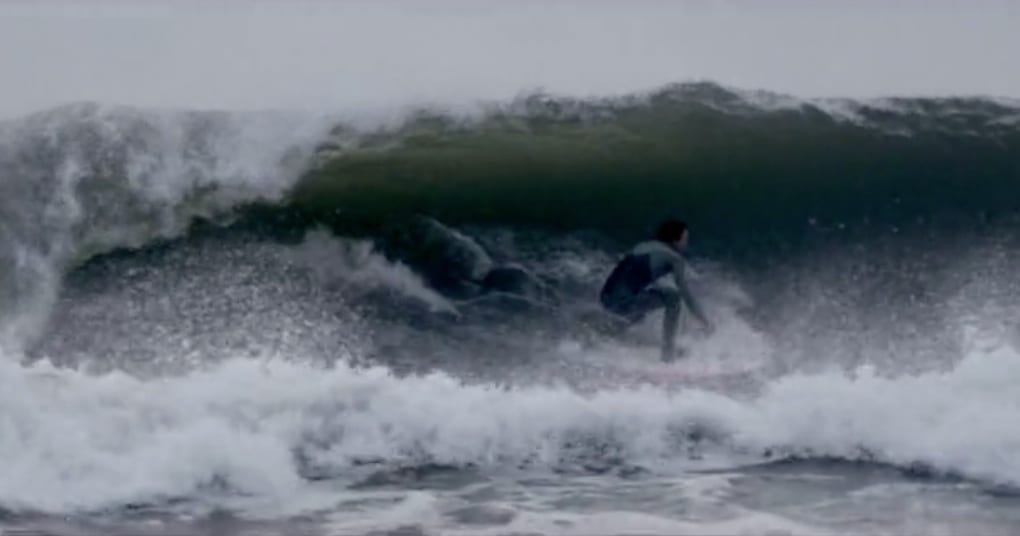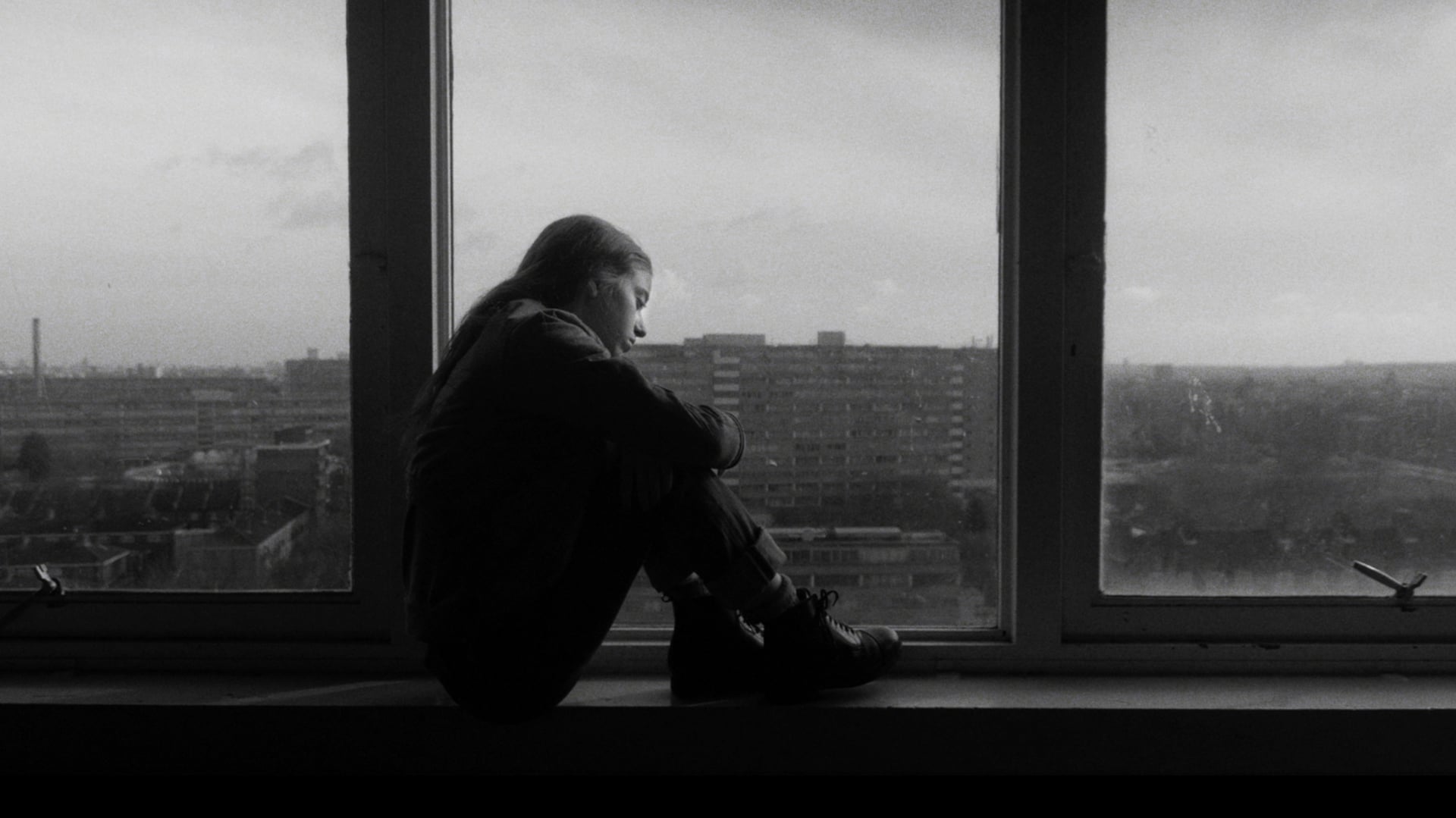It’s probably freezing cold and very wet in the summer too but the characters in your short doc seem to prefer the winter to surf off the industrial North East coast of UK. What were the main challenges of getting the footage?
Unfortunately, quality surf up there is usually confined to the colder seasons. And with that come all the trials and tribulations of filming in near freezing environments: shortened battery life, howling winds threatening to blow your entire setup off the cliffs, sideways rain, etc. And as we’re trying to show in the clip, the North East is not only a post industrial coastline.
In fact, most of the really good breaks are situated in remote and stunning countryside. Which means lugging your gear across several swampy fields and creeks. And when you’re finally rigging up you turn around to see a bunch of curious cows inspecting the contents of your camera bag. Another big challenge was the surf forecast. In the North Sea, decent conditions can be reliably predicted roughly two days in advance. So making the call to load up the van and drive up was always a last minute gamble.
And what heavy duty gear did you use?
Probably the two crucial components in making the film on an independent basis were Tom’s RED setup and his Volkswagen T4 campervan. We just jumped in the van, loaded up on cheap coffee and cereal and gunned it up North. The ability to set up camp anywhere and in any weather was priceless if not exactly luxurious. So the heaviest gear we brought were probably our sleeping bags and jackets.
Did you try to use natural lighting most of the time – and how did this effect the shoot. Were there certain hours which were better for the light?
The film is exclusively shot with natural and practical light. There simply was no time or place to lug around lighting gear. Also, we were going for a natural and authentic look. So filming was limited to daylight hours. During the winter, so far up North, the light never really gets that garish, hard high-noon look, which made us pretty flexible throughout the day. But we still preferred blue and golden hour. Can’t beat the magic. And surfers appear to favour ungodly hours anyway. The major session with Sandy that made it into the movie started at 5am.
What was your method for capturing the real essence of the men featured? Had you established a rapport with them before you began filming?
People up there have a heart of gold, seriously. It really gets you, the contrast to life in London. You’ll just be randomly approached by friendly strangers in the street, pub, supermarket and everybody’s keen to help once you’ve told them why you’re here. We met each of the guys (and several other people) in person before we started filming. We wanted to make sure there’d be something unique about each one of them that would help the story and they were comfortable with what we were trying to do. The amount of cooperation and help we got from everybody was unbelievable.
Was there a lot of footage that didn’t make the final edit?
Yes. And there was also the decision for a stylized, visceral approach to the film. We felt it was the strongest way, given the format, to create an impression of what it means to be a surfer up there. So a lot of the guys’ individualities, their stories and also the history of surfing in the North East fell out. Kill your darlings, baby.
Plus so many all-time sessions we missed, ¨ you should have been here two hours ago, the waves were epic¨, historical footage we had gotten a hold of, Super8 stuff we had shot ourselves, storytelling aspects we had begun to explore and were forced to abandon (namely environmental issues, economic recovery and sustainable innovation in the area), all in the service of creating the tightest possible experience for the viewer. Who knows, maybe we’ll find the time and cash to turn it into a 30 min piece. Might sound weird, but we really can’t wait to be back up there.
Your film, In Time,(See in Related Content) is altogether very different and more poetical – shot in b&w it’s a reflection on the end of our youth and innocence. What was the inspiration behind making this film?
No to dispute that there IS a big difference, but we would argue that ¨Through Clouds and Water¨ is also more poetical and moody than is customary for the conventional documentary format. Trying to capture a feeling rather than just an image, or facts, or events, lies at the heart of our cinematic approach.
In terms of inspiration for In Time: We feel we’re both at an age young enough to remain in touch with teenage angst – the overwhelming and complex prospect of having to build an autonomous, responsible existence. After all, it’s been less than two years since we embarked on the adventure ‘A Common Future’. Yet we’re also old enough to look back, reflect on and distill it into imagery and words that are not so much about what it MEANS, but about what it MEANT to be young. If that makes any sense at all.
Fittingly, it took all of A Common Future’s young existence to create ‘In Time’. It was one of the first projects we worked on together. Simon wrote the script two months after we met. Shortly after, Tom bought his RED and the shots of mountains and forest near the end of the clip are some of the first he recorded on it. The project continued morphing along with our experiences until we felt it had turned into something worthwhile and true to ourselves. It’s easily A Common Future’s most personal project to date. And our most ruthless and grown-up edit: The original rough cut was almost ten minutes long.
And finally, please tell us about A Common Future and how does the directing partnership work. Do you have different strengths? Are you in synch with a common vision?
A Common Future is almost as old as our friendship. We met roughly two years ago in Munich and clicked instantly. Then moved to London together and decided to give this commercial filmmaking thing a shot.
We’re definitely a case of opposites attract. Tom is an experienced DoP while Simon comes from editing and writing. Each of us appreciates what the other brings to the table very much and only through the combination of minds we’re able to create something we can proudly label ACF. Through our varied skillset we’re able to shoot and edit our own films, if need be. This makes us quite versatile and without it, both In Time and Through Clouds and Water would very probably not exist.
Also, we’re blessed with a super talented circle of friends that help us with expert advice, sound design (Cheers, Chris Banks!) And all the other apsects of filmmaking that we’re way too incompetent for.
See more of their work here














